
Genga |Frasassi Caves | Gola della Rossa Park
6 km away
The Frasassi Caves are one of the most beautiful attractions in the whole of Italy. Considered the largest underground complex in Europe, the Frasassi Caves are characterized by a series of underground routes of about 30 km in length, divided into 8 different geological levels. Known for their stalactites and stalagmites, centuries-old limestone concentrations of the most diverse shapes, the Frasassi Caves are a popular destination for all lovers of speleology and nature enthusiasts. The caves are open to the public for only 1.5 of the 30 km in total, and inside, the temperature never exceeds 14°C. The Frasassi Caves are managed by the Frasassi Consortium, established in 1972 thanks to the collaboration between the province of Ancona and the Municipality of Genga with the aim of safeguarding and enhancing this naturalistic site. It is possible to visit the caves by choosing from various routes, different in duration and difficulty.
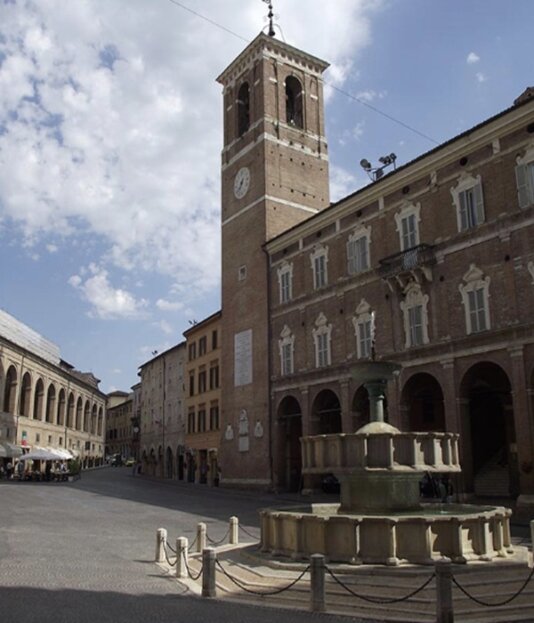
Fabriano
6 km away
The territory of Fabriano is located on the Umbria-Marche Apennines. Medieval city with several sites of tourist interest (birthplace of the painter Gentile da Fabriano / 1370-1427) but also an important industrial center for the production of paper (Cartiere Miliani di Fabriano) and household appliances. To visit near the historic center: The Palazzo del Podestà; the Sturinalto fountain; the Town Hall; the Loggia of San Francesco; the former hospital of Santa Maria del Buon Gesù now Pinacoteca Civica; the Museum of Paper and Watermark; the Museum of Bicycle Professions. Among the numerous churches it is worth visiting: The Cathedral of San Venanzio; the Oratory of Charity; the Oratory of the Gonfalone; the Church of San Benedetto; the Church of Sant'Onofrio or Scala Santa.
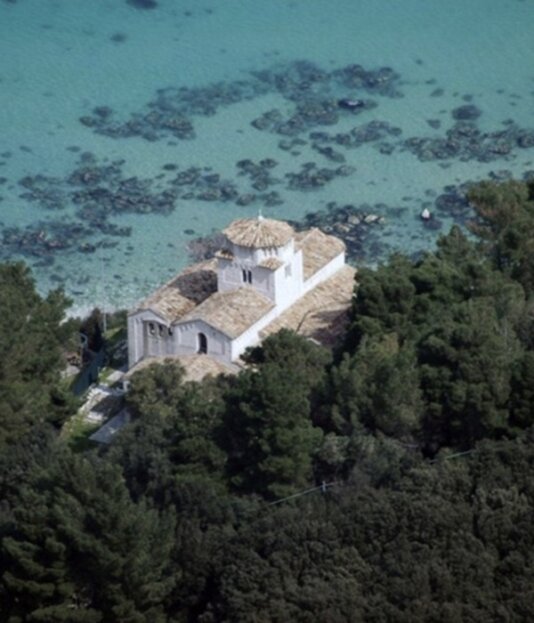
Ancona | Monte Conero | Portonovo | Conero Riviera
66 km away
The Conero Riviera is a unique territory in the entire Adriatic, in the heart of Italy and in the heart of the Marche region, it can offer a holiday for all tastes. In the centre of Italy first of all, in the centre of the Adriatic, in the centre of the Marche region. A centre that identifies with the heart where emotions, desires and passions are located. The Conero Riviera is a stretch of coast that overlooks the Adriatic Sea, just south of the city of Ancona, the regional capital, with a tourist and commercial port. It takes its name from the slopes of Monte Conero, a 572-metre high promontory overlooking the sea, protected in the Conero Regional Park, the first regional park in the Marche region.

Urbino | Ducal Palace | Raphael's house
95 km away
The Ducal Palace of Urbino, located next to the cathedral, is one of the most interesting architectural and artistic examples of the entire Italian Renaissance and is home to the Galleria Nazionale delle Marche. The most ambitious project of Federico da Montefeltro, a highly cultured and refined man, was the construction of the Ducal Palace and at the same time, the urban planning of Urbino, making it the city "of the prince". Before Federico's interventions, the ducal residence was a simple palace on the southern hill, to which was added a nearby castle, on the edge of the cliff towards the Porta Valbona.
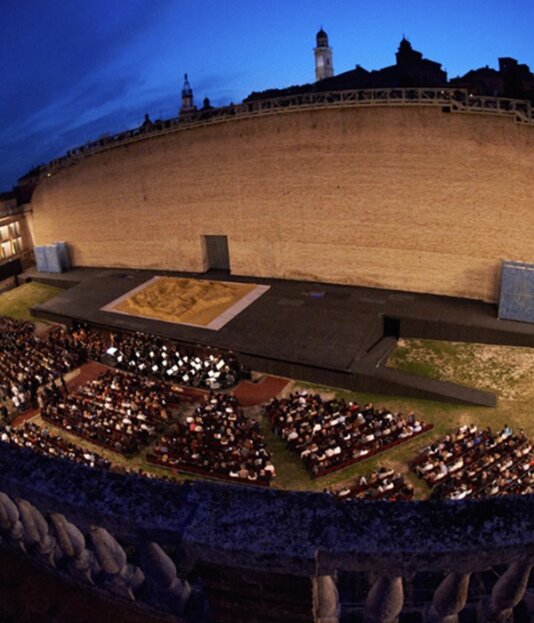
Macerata | Sferisterio | Civic Tower
56 km away
The Sferisterio of Macerata is a unique theatre structure in its architectural genre. According to the most famous opera singers, it is the open-air theatre with the best acoustics in Italy. The building was designed in 1823 by the versatile neoclassical architect Ireneo Aleandri (designer, among other things, of the Ariccia viaduct and the Teatro Nuovo “Gian Carlo Menotti” in Spoleto). The sferisterio owes its name and its particular circular segment plan to its original use, as a place for the ballot box with the bracelet. It has a maximum capacity of about 2800 seats and has been known since 1921 for the summer opera season, first called “Macerata Opera” and, since 2006, transformed into the “Sferisterio Opera Festival” by the then artistic director Pier Luigi Pizzi. Since 2012 the Festival, directed by Francesco Micheli, has been called “Macerata Opera Festival”.
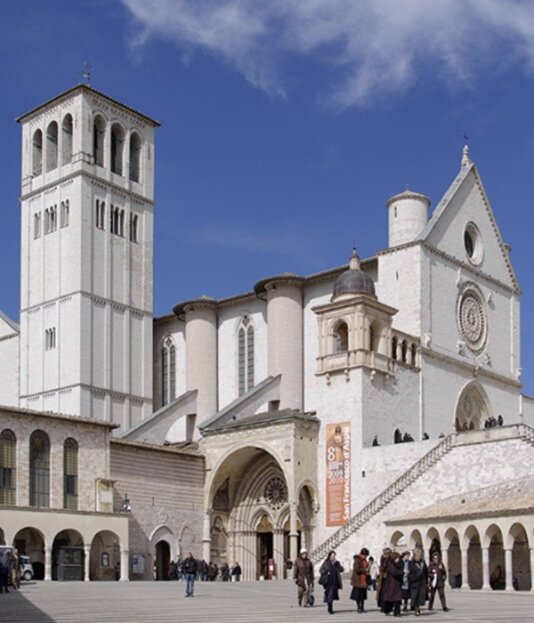
Assisi | Basilica of St. Francis
65 km away
The Basilica of Saint Francis in Assisi is the place that has preserved and guarded the mortal remains of the Seraphic saint since 1230. Commissioned by Pope Gregory IX as a specialis ecclesia, it was awarded by the same Pontiff the title of Caput et Mater of the Order of Friars Minor and at the same time entrusted in perpetuity to the same friars. In the complex history that marked the evolution of the Order, the basilica (and the annexed Sacred Convent) was always guarded by the so-called "friars of the community", the group that later went on to form the Order of Friars Minor Conventual. In 1754 Benedict XIV elevated it to the dignity of Patriarchal Basilica (now "Papal") and Papal Chapel. In the year 2000, together with other Franciscan sites in the surrounding area, the basilica was included in the UNESCO World Heritage List.
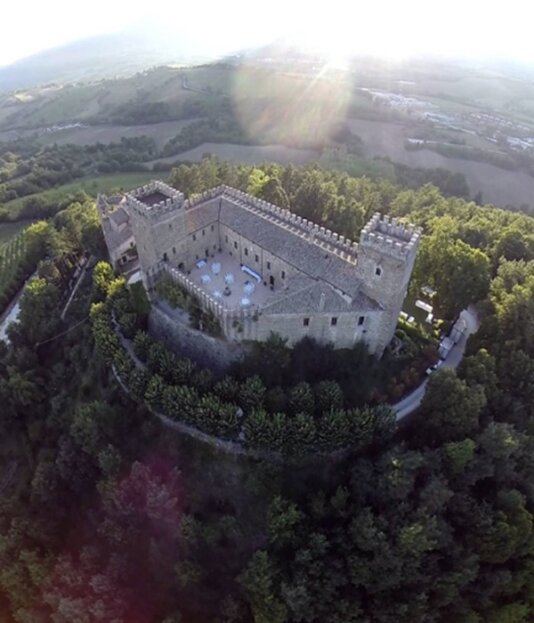
Camerino | The Cathedral | The Borgia Fortress
25 km away
The old city, the historical center that grew in the villages, lives in subdued and warm tones; the stone alternates with terracotta and pink, ochre, orange plaster. The compactness, the color, the grain of the sandstone vary: from Serrapetrona came pink stone; from Morro reddish stone; from Massaprofoglio, Valcimarra, Campolarzo whitish stone; from San Luca, Mergano, Valeano, Paganico clayey limestone. The frequent use of bricks resolves in a game of sandstone-brick balance all the Camerino buildings. The atmospheric agents continuously dig away. Therefore the plaster imposes itself as a safeguard and decoration; very often the buildings have portals, baseboards, capitals, frames of the doors of the dead, masks or only intact pieces of wall.
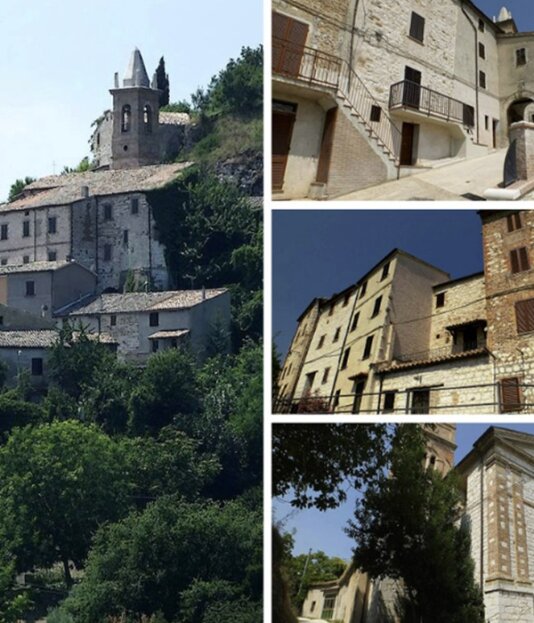
Sassoferrato | Albornoz Fortress | Sentinum Archaeological Park
24 km away
Sentinum Park is considered one of the most important archaeological sites in the Marche. Located at the gates of the city of Sassoferrato, on the southern side, it consists of two areas, respectively in Santa Lucia and Civita, divided by the provincial road that leads to Fabriano, connected by a pedestrian walkway that flows into a large parking lot. The Rocca di Albornoz, a massive military construction dating back to the 14th century, represents the symbol of the city, both for its imposing location in a dominant position, and for its history. It was built in 1365 by order of Cardinal Egidio Albornoz, papal legate, with the money obtained from the sale of the goods confiscated from the Atti di Sassoferrato family. Restored in various eras, the Rocca was a defensive bastion of great importance for the entire area. Thanks to the latest restorations, its imposing remains can still be admired.
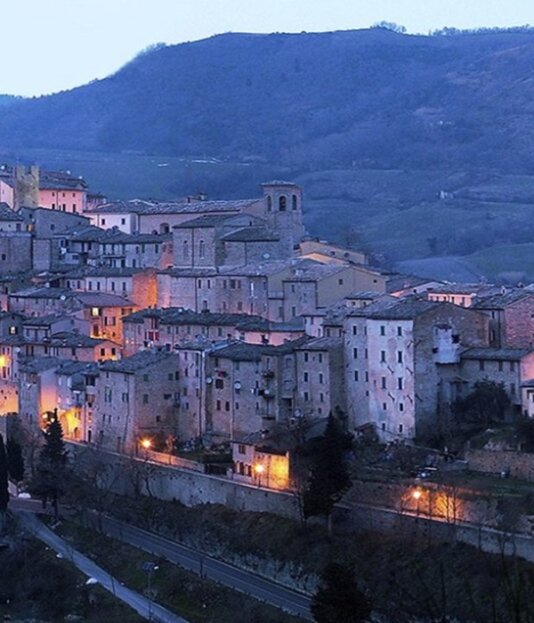
Serra San Quirico | Le Copertelle | Church of Santa Lucia
15 km away
The town of Serra San Quirico has a well-preserved historic center with a medieval layout; a real peculiarity are the Copertelle, covered passages that run along the walls of the town, the main defense tower called the Cassero, the baroque church of Santa Lucia with a characteristic bell tower ending in a bulb, where the paintings by Pasqualino de Rossi depicting The stories of Santa Lucia, his masterpiece in the Marche and created in the last decades of the 17th century, are kept. The church also has a baroque plastic decoration created based on a design by Leonardo Scaglia; it also houses a canvas by Cavalier d'Arpino depicting the Madonna and saints as well as two other paintings by Pasqualino de Rossi: the Madonna del Carmelo and the Vergine assunta. The interior of this church, formerly a Silvestrina abbey, is a very interesting and intact example of the baroque in the Marche. It also preserves the original organ with choir by the Roman Giuseppe Testa, dated 1676 and recently restored to its original stamps, the scagliola inlaid frontals of the side altars, up to the benches themselves inlaid with monograms (mid-19th century) and the floor in worn terracotta tiles.
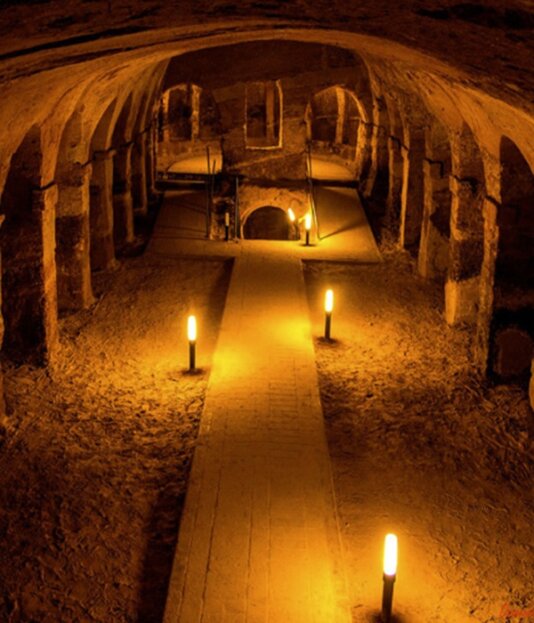
Camerano | Camerano Caves| Underground city
70 km away
Numerous, dug into the sandstone, communicating, run through the subsoil of the historic center in a labyrinthine fashion. For a long time it was believed that they were the remains of ancient sandstone quarries or even places to store wine. But the explorations, the interpretations carried out and the tourist routes, which have made these caves accessible today, have revealed the presence in almost all the rooms of architectural embellishments, bas-reliefs and decorative details that are not suited to sandstone quarries or simple storage rooms: domed, sail and barrel vaults, circular rooms and columns of particular architectural taste, decorations with friezes, ornamental motifs and religious symbols are one of the constants of the entire route.
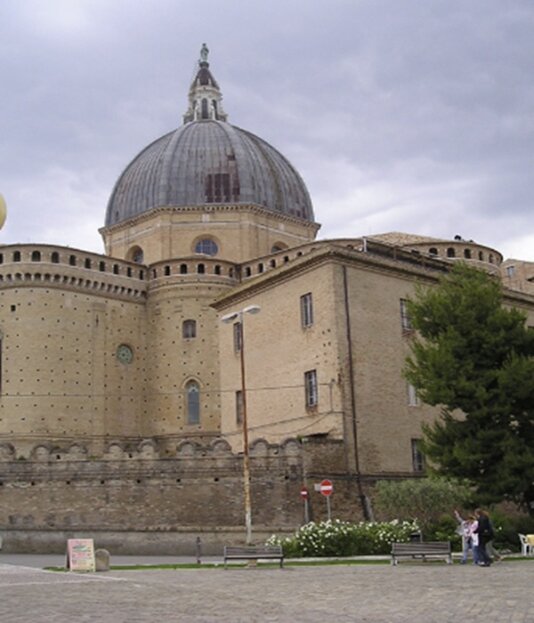
Loreto | Piazza della Madonna Square
80 km away
The city stands on the top of a gentle hill, with a wide surrounding countryside characterized by the cultivation of olive trees. The silhouette of the dome and bell tower of the Basilica stands out for its height and majesty, on top of which is the figure of the Madonna. The panorama that can be enjoyed ranges from the sea to Monte Conero, up to the Umbrian-Marche Apennines. The city developed around the famous Basilica that houses the famous relic of the Holy House of Nazareth where, according to tradition, the Virgin Mary was born and lived and where she received the announcement of the miraculous birth of Jesus.
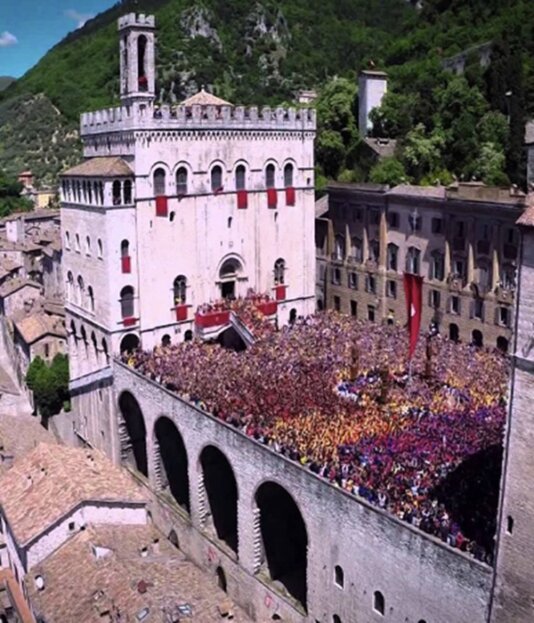
Gubbio | Roman theatre | Historic centre
30 km away
The territory of the tourist district is located in the north-eastern area of Umbria, on the border with the Marche (east). A predominantly mountainous area, bordered to the east by the Apennine chain and to the west by the Tiber valley, it is rich in natural beauty and art treasures where history, culture and landscape coexist in a harmonious symbiosis. Alongside historical centers of extraordinary beauty and charm that preserve excellent testimonies of the medieval era, it offers nature with uncontaminated environments and artistic artisan productions that testify to the centuries-old mastery of a consolidated ability.


